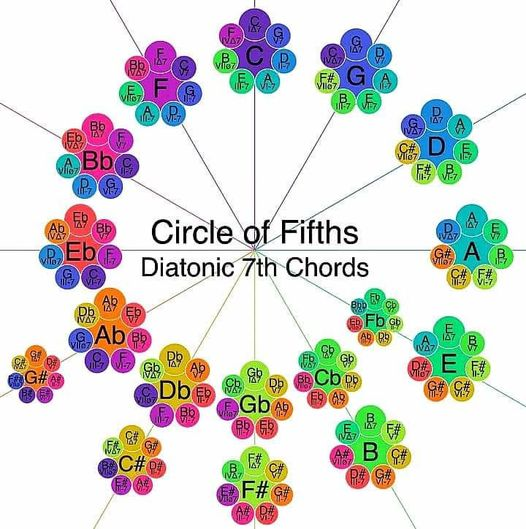20 November, 12:57
"Physics and the Universe
In both music and physics, vibration frequencies are key to understanding how things work. Musical notes are frequencies of sound waves, and just as frequencies interact to create harmony in music, they also interact in the physical world. In the universe, everything—from light to atoms—is in constant vibration. The Circle of Fifths represents an organized system, similar to how physical systems (like atoms or planetary orbits) follow patterns and cycles."
In both music and physics, vibration frequencies are key to understanding how things work. Musical notes are frequencies of sound waves, and just as frequencies interact to create harmony in music, they also interact in the physical world. In the universe, everything—from light to atoms—is in constant vibration. The Circle of Fifths represents an organized system, similar to how physical systems (like atoms or planetary orbits) follow patterns and cycles."
Notice: Undefined index: tg1tga_access in /home/admin/www/anonup.com/themes/default/apps/timeline/post.phtml on line 396
20 November, 12:57
In response --- Shuaye to her Publication
The Circle of Fifths is a diagram that shows the relationship between musical keys. It arranges keys in a circle, where each key is a fifth away from the next one. Moving clockwise adds sharps, while moving counterclockwise adds flats. This helps musicians understand key signatures and chord progressions, guiding the flow of music from one key to another.
In a broader sense, this structure reflects harmony and balance. Just as musical notes vibrate at specific frequencies, the Circle of Fifths can be seen as a reflection of how frequencies interact in an ordered, systematic way. Each key can be thought of as vibrating at its own unique frequency, and the relationships between these frequencies create musical harmony.
Diatonic 7th Chords
A diatonic 7th chord is built from the notes of a particular key and includes the 7th note above the root. In a key like C major, you form these chords by stacking notes in thirds, with each chord corresponding to one note of the scale
In a broader sense, this structure reflects harmony and balance. Just as musical notes vibrate at specific frequencies, the Circle of Fifths can be seen as a reflection of how frequencies interact in an ordered, systematic way. Each key can be thought of as vibrating at its own unique frequency, and the relationships between these frequencies create musical harmony.
Diatonic 7th Chords
A diatonic 7th chord is built from the notes of a particular key and includes the 7th note above the root. In a key like C major, you form these chords by stacking notes in thirds, with each chord corresponding to one note of the scale
Notice: Undefined index: tg1tga_access in /home/admin/www/anonup.com/themes/default/apps/timeline/post.phtml on line 396
These chords are the foundation of a key’s harmony, and each one produces a unique vibration frequency. The interval between the notes in each chord creates tension and resolution, much like the oscillations of a wave that reach a peak and then return to equilibrium.
The diatonic 7th chords, with their specific intervals, mirror how different frequencies can create complex patterns, resonances, and harmonies. Just like in music, these physical vibrations can create stability or tension, leading to the balance that governs both musical and cosmic systems.
The diatonic 7th chords, with their specific intervals, mirror how different frequencies can create complex patterns, resonances, and harmonies. Just like in music, these physical vibrations can create stability or tension, leading to the balance that governs both musical and cosmic systems.
12:57 AM - Nov 20, 2024
In response --- Shuaye to her Publication
Only people mentioned by AngelsNamed in this post can reply

